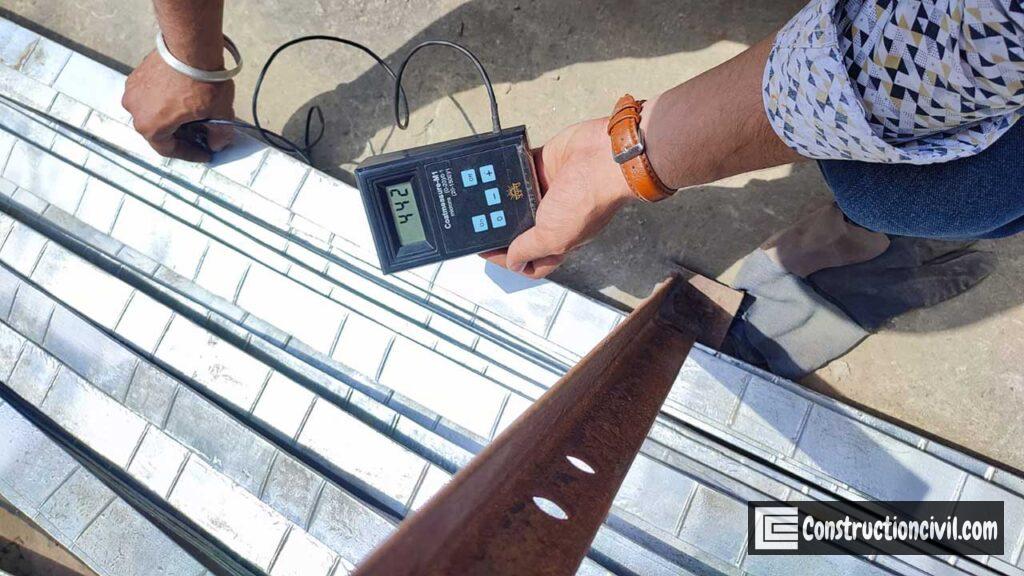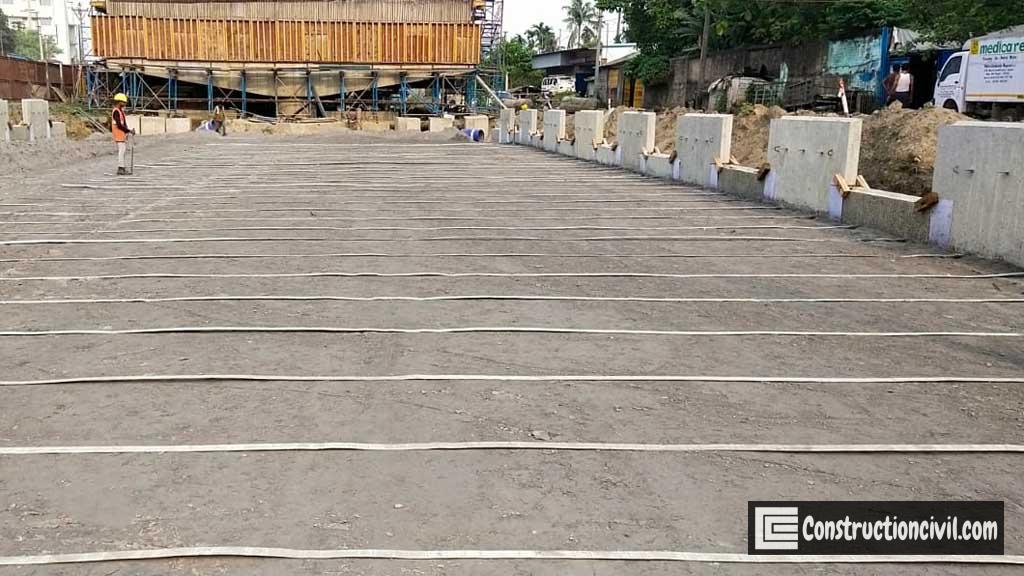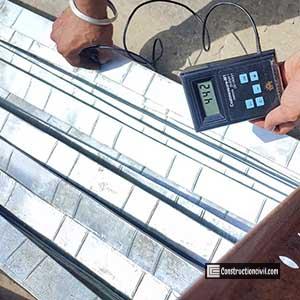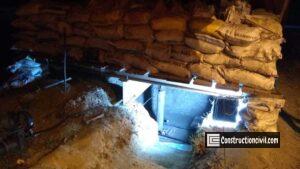Soil reinforcement methods are adopted to improve the strength and stiffness of soil layers. Different ground improvement techniques are used to enhance soil strength, like vibro replacement stone and sand columns, by providing root piles-soil nailing, strips and membranes, stone columns, and granular blankets. After improvement, soil can withstand large tensile strength. The above soil reinforcement methods are employed in various construction projects as per the requirement depending on the existing soil condition to prevent the failure of soil slopes and improve the soil’s bearing capacity.

Also, Read: Top 7 Ground Improvement Techniques in Civil Engineering
Vibro replacement stone and sand columns:
The Vibro replacement stone and sand columns are widely-used Soil reinforcement methods globally. Historically the system has been used to densify loose granular soils by holes jetted into soft, fine-grained soil and backfield with densely compacted gravel or sand. Over the past few years, the technique has been used to reinforce soft soil and alluvial deposits.
- Relative cost: Moderate to high
- Treatment depth: Maximum of 20m
- Material required: Gravel or crushed rock backfills, water
- Equipment needed: Vibroflot and crane or vibrocat
- Properties of treated material: Help to increase bearing capacity and reduce settlements.
Advantages and limitations:
- Vibro replacement stone and sand columns offer considerable time savings over other ground improvement methods like preloading and vertical drains.
- Vibro replacement stone and sand column solutions are more cost-effective.
- Limited bearing capacity.
Also, Read: Vibroflotation, Blasting & Dynamic Compaction – Ground Improvement
Root piles – soil nailing:
Soil nailing is the soil reinforcement method of reinforcing the soil with steel bars or other materials. It has been an alternative technique to another conventional supporting system as it offers flexibility, rapid construction and competitive cost. The purpose is to increase the Tensile and Shear Strength of the soil and Restrain its displacements. Soil nailing is a construction technique that reinforces soil to make it more stable. In this technique, the soil is reinforced with slender elements such as reinforcing bars called nails. These reinforcing bars are installed into pre-drilled holes and then grouted.
- Relative cost model to high
- All types of soils or conditions are suitable for this Method.
- The reinforced zone behaves as a coherent mass.
- A particular type of equipment, such as drilling and grouting equipment, is required for the above Soil reinforcement method.
- Material required: Reinforcing bars cement grout.
- Root piles and soil nailing are Used to carry tension, shear and compression.
Advantages and limitations:
In situ reinforcement for soils that can’t be grouted or mixed in place with admixtures.
Also, Read: Soil Reinforcement Methods – Advantages and limitations
Soil reinforcement Strips and membranes:
In this Soil reinforcement method, horizontal tensile Strips or membranes are buried in soil under embankments, RE walls, gravel base courses and footings to increase the soil bearing capacity and reduce deformation. Cohesionless soil is the most suitable soil condition/type for these types of ground improvement. Treatment depth for these type of soil reinforcement can be varied as per site requirements and can construct earth structures to a height of several tons or meters.
- Materials like geogrid and geotextile are required for these reinforcement soil improvement methods.
- Excavating, earth handling and compaction equipment are required for the above mention ground improvement technique.
- Properties of treated material: Self-supporting earth structures, increased bearing capacity, reduced deformations.
- Relative cost is low to moderate.
Advantages and limitations:
- It is an economical Soil reinforcement method.
- The above process of ground improvement is earth structures coherent.
- Tolerate deformations and increase the allowable bearing capacity of the soil.

Also, Read: Ground Improvement Techniques – Vertical Drain & Stone Column
Soil reinforcement using stone column:
It is another Soil reinforcement technique under the in-situ soil reinforcement technique. There are mainly three types of stone column installation and construction methods: displacement method, non-displacement Method and Vibro-replacement Method. Non-displacement methods are divided into three categories depending upon the Method of construction: Bailer and casing method, Direct mud circulation method and Rotatory drill method. Two kinds of Vibro-replacement methods are found: the wet and the dry processes.
- Treatment Depth – Maximum 15.00 to 25.00 m in INDIA
- Area of Treatment – Economic used for a large area of the soil mass
- Termination – Preferably over or into the firm, dense strata
- Arrangement Pattern – Triangular, square & hexagonal
- Spacing – Generally 1.20 m to 2.50 m
Advantages and limitations:
- Increase the load-carrying capacity of soft ground(Undrained shear strength of Clay 7.0-50.0 kPa and sensitivity < 4.0).
- Reduce total and differential settlements.
- Increase in the resistance of soft foundation soil to liquefaction
- Help to improve slope stabilization.
- Not Suitable in the absence of desired bearing strata under the soft soil
The failure mechanism of the Stone Column:
The following three types of failure generally occur in the case of the single stone column in a homogeneous soft layer.
- A long stone column with a firm or floating support – Bulging Failure
- A short column with a rigid base – Shear failure
- Short floating column – Punching failure (Shear failure could also occur)
And the following three types of failure generally occur in the case of the single stone column in a non-Homogeneous soft layer:
- The soft layer at the surface – Bulging or shear failure
- Thin, very soft layer and or organics – Contained local bulgin
- Thick very soft layer and or organics – Local bulging failure
Also, Read: SPT Test for Soil Procedure, Refusal Conditions & Correction
Design estimation:
- Estimatimated design load-carrying capacity of stone column obtained after considering bulging of the column, surcharge effect, bearing support provided by the intervening soil and the factor of safety over estimated Ultimate load, which is a minimum 2.50.
- Design estimation of settlement by the reduced stress method depends on the settlement of untreated ground as per IS:8009, area replacement ratio(as), stress concentration Factor(n) and estimation of Reduction Ratio(b).
Field Controls:
- In “Non-Displacement Installation Method”, we have to monitor boring operation closely and set criteria of ramming for the measurement of its extent and consumption of granular fill material. In the case of “Method using Vibrofloat”, monitor penetration depth, including the embedment in the firm strata, the volume of backfill for getting an indication of density achieved and have to monitor ammeter or hydraulic pressure gauge readings for the verification of maximum possible density achieved. Two types of field tests are generally available to confirm the load-carrying capacity of the Stone column, namely the Single Column test and the Three-column group test.
Also, Read: Laboratory Test on soil – Procedures and Objective
Also, Read: PVD Drain Installation for Ground Improvement
Soil reinforcement using Granular Blanket:
- Laid over top of stone column treated ground
- Consists of clean medium to coarse sand in the layered, compacted manner (75 – 80 % Relative density)
- Minimum thickness – 0.500 m
Also, Read: Geotechnical Investigation Objectives and Guidelines





